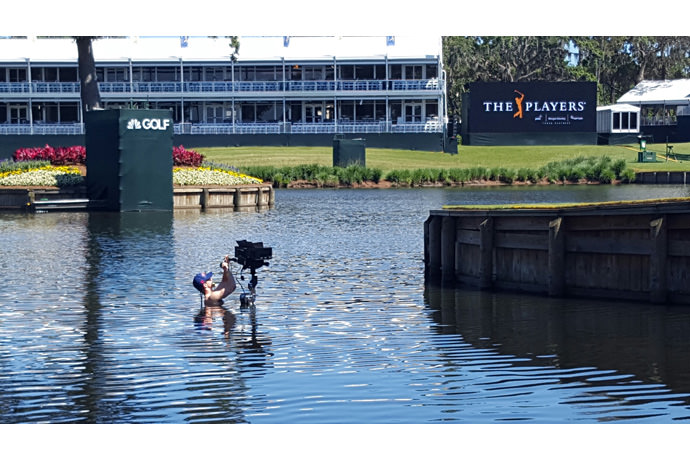Emirates Airlines has created the position of “boredom specialist,” bringing on Dr. Sandi Mann to reduce the number of complaints by young children about the length of plane trips. The company has also released a special report to assist parents traveling with children keep them happy and entertained.
Amazon’s reality television department has a new executive leader in Heather Schuster, just hours after the previous head of unscripted programming, Conrad Riggs, left the company. Schuster has only been with Amazon since August of this year, after joining the company from Ryan Seacrest Productions.
Jay Hunt will be joining Apple’s Worldwide Video platform as creative director for the European region. She joins Apple after departing Channel 4 in June, having developed, among other series, the first two seasons of Black Mirror before it was acquired by Netflix. Additionally, at BBC One, she led creative teams for both Luther and Sherlock.
Over the next 18 months, Walgreens will close 600 of the close to 2,000 stores it acquired from Rite Aid in September. The affected locations will be now-redundant stores located within a mile of other Walgreens and Rite Aid stores.
GSN has hired Fran Shea to the position of executive vice president of programming and marketing after the recent departure of Amy Introcaso-Davis from the same role. Not only will Shea oversee all GSN productions, she will handle both network branding and messaging as well.
“Fran has an impressive track record of creating phenomenally successful and culturally relevant content,” said GSN CEO Mark Feldman. “Her creative vision and leadership will be critical to GSN as we continue to enhance our programming choices, both original and acquired, to engage our core viewers.”
Before joining GSN, Shea served at E!, where she briefly led the company as interim president.
Mike Hopkins, formerly the CEO of Hulu, has joined Sony Pictures Television. Replacing him will be Randy Freer, former Fox Networks Group president and current Hulu chief operating officer.
“Mike is a proven and innovative leader who has played a key role in redefining today’s television landscape, both for consumers and for how content producers reach them,” said Tony Vinciquerra, Sony Pictures Entertainment CEO.
Hopkins led the streaming service’s expansion into live programming earlier this year, and spearheaded efforts to grow the company’s slate of original programming. Before joining Hulu, he worked at Fox Networks as president of distribution.
LeeAnne Stables is leaving Paramount Pictures, where she served as president of worldwide marketing partnerships, to better care for her aging mother.
“LeeAnne is an industry trailblazer and tireless deal maker that has delivered amazing marketing value to our Paramount films over the years,” said Megan Colligan, Paramount’s president of worldwide distribution and marketing. “We respect her choice to leave at the end of the year, but our team will truly miss her talent, leadership and wit.”
Stables worked at Paramount for 12 years, heading marketing campaigns for five Transformers movies, three Star Treks and three Mission Impossible sequels. Additionally, she served at General Motors, where she was instrumental in the car manufacturer’s many partnerships with major film franchises.
After the sudden departure of Airbnb China’s vice president Hong Ge, co-founder Nathan Blecharczyk will be taking over operations in the region. Ge resigned from his position just months after his hiring, with little information given as to the reason.
“China is Airbnb’s fastest growing domestic market ever as well as our second fastest growing outbound travel market ever,” said the company in a statement.
Blecharczyk’s new title will be chairman of Airbnb China, though he will not be relocating to the region.
Ford Motor Company will undergo major global leadership reorganization, promoting Kumar Galhotra to chief marketing officer of the company. Both Stephen Odell, executive vice president of global marketing, and Bennie Fowler, group vice president of quality and new model launch, will be retiring.
“As we develop our strategy to become the most trusted mobility company, designing smart vehicles for a smart world, we will continue to reshape the organization to deliver the most value for our customers and all of our stakeholders,” said Jim Hackett, president and CEO of Ford. “The changes we are announcing today will further align resources and improve efficiencies throughout our global markets and operations.”
Coca-Cola North America president J. Alexander Douglas Jr. has announced his retirement. He will be succeeded by James Dinkins, current president of the Minute Maid business unit and chief retail sales officer for CCNA.
“Douglas has done a tremendous job of leading CCNA to a strong position,” said James Quincey, Coca-Cola’s president and CEO. “Dinkins is a highly experienced, respected executive who will lead Coca-Cola North America as it continues to evolve and grow.”
Dinkins has been with The Coca-Cola Company for 26 years, holding senior roles in the 7-Eleven global customer and national retail sales team.
Pharmaceutical giant Merck will lay off 1,800 sales representatives in the near future, but will create a “chronic care” sales team of almost 1,000 members to promote its top-selling drugs. According to The Wall Street Journal, Merck claims the move is a reorganization measure to reduce costs and shift focus to drugs showing more potential for growth.
Caesars Entertainment announced the hire of Chris Holdren as their new chief marketing officer, where he will focus on advancing the company’s Total Rewards loyalty network.
“Chris has broad marketing experience overseeing one of the best-known and most successful loyalty programs in the hospitality industry, as well as leading analytics, digital and partnerships,” said Mark Frissora, CEO of Caesars. “His experience will complement our efforts to further cement Caesars Entertainment’s marketing leadership in the gaming and hospitality space.”
Before joining the casino conglomerate, Holdren worked at Starwood Hotels & Resorts Worldwide and The Walt Disney Company, contributing to the loyalty programs of both brands.
Kevin Shelby has joined Orion Pictures as its senior vice president of marketing and distribution, shortly after the studio hired Kevin Wilson as executive vice president of distribution.
Prior to Orion, Shelby held the role of senior vice president of marketing at BH Tilt, overseeing planning and distribution of films such as The Green Inferno and Lowriders. Before BH Tilt, Shelby worked at New Line Cinema as senior vice president of theatrical marketing.
Jerry Storch, CEO of Hudson’s Bay Company, will be stepping down from his position on November 1, after activist investor Land & Buildings pressured the company into selling several of its properties. Taking over is Richard Baker, governor and former CEO of Hudson’s Bay, on an interim basis while the company searches for a permanent replacement.
“The Board and I are grateful for Jerry’s contributions over the past three years, including enhancing our all-channel strategies, recruiting key talent, leading our cost-cutting efforts and working to address the challenges for our banners in the fast-evolving retail environment,” said Baker.
Moonpig has hired Andre Rickerby as their latest CMO, shortly after a major rebranding campaign. Rickerby joins the company fro Etsy, where he served as its vice president of global marketing for four years.
(Editor’s Note: This post will be updated daily until Friday, October 27. Have a new hire tip? Let us know at editorial@alistdaily.com.)
Job Vacancies
| Director, Marketing |
Razer USA, Ltd. |
Irvine, CA |
| SVP & Chief Marketing Officer |
NBC Universal |
Universal City, CA |
| Director, Engagement & Retention Marketing |
Hulu |
Santa Monica, CA |
| Director, Global Content Marketing |
Indeed |
Austin, TX |
| VP of Marketing |
Intuit |
San Diego, CA |
| VP, Worldwide Marketing Partnerships |
Paramount Pictures |
Hollywood, CA |
Make sure to check back for updates on our Jobs Page.



